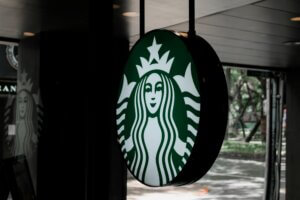
The strikes, which began just days before Christmas, are strategically designed to disrupt operations at these major retailers when they typically experience substantial profits.
Amazon faced its largest labor action to date in the United States, with nearly 10,000 employees initiating a strike on Thursday at facilities across several major urban centers. The International Brotherhood of Teamsters—representing the striking Amazon workers—issued a statement through general president Sean O’Brien, attributing potential holiday delivery delays to what he deemed Amazon’s “insatiable greed.”
“We gave Amazon a clear deadline to come to the table and do right by our members,” said O’Brien. “They ignored it. These greedy executives had every chance to show decency and respect for the people who make their obscene profits possible. Instead, they’ve pushed workers to the limit and now they’re paying the price. This strike is on them.”
The Amazon workforce is pushing for official union recognition and discussions regarding higher wages, as well as improved benefits and working conditions. Concurrently, Starbucks is experiencing its own labor unrest, with Starbucks Workers United, which represents baristas at 525 locations, launching a five-day strike in key markets.
The Starbucks baristas are advocating for enhanced compensation, increased staffing levels and more accommodating work schedules. The union is specifically demanding a substantial wage hike, with proposals calling for an immediate 64% increase in the minimum hourly wage, rising to 77% over a three-year contract period. The workers argue that the company’s offer of a 1.5% annual raise is inadequate and fails to keep up with inflation.
“We are aware of disruption at a small handful of stores, but the overwhelming majority of our U.S. stores remain open and serving customers as normal,” Starbucks spokesperson Phil Gee told ABC News.
The strikes underscore the ongoing tensions between these major corporations and their workforce. Both unions are working to raise public awareness of their struggles and to compel their employers to engage in discussions about fair compensation and labor practices.
Amazon Says Striking Drivers Are Not Employees
The Teamsters have established 20 bargaining units across multiple Amazon facilities and are demanding that the company officially recognize these unions at each location. The strike, which could potentially lead to collective bargaining negotiations, represents a major challenge to Amazon’s long-standing resistance to unionization efforts.
The union has primarily concentrated its efforts on organizing delivery drivers—although Amazon warehouse workers have also joined the efforts. However, America’s second largest private employer contends that these drivers are not its direct employees, as they work for contractors specifically recruited to manage package deliveries.
“For more than a year now, the Teamsters have continued to intentionally mislead the public—claiming that they represent ‘thousands of Amazon employees and drivers’,” Amazon spokesperson Eileen Hards said in a statement to ABC News. “They don’t, and this is another attempt to push a false narrative. What you’re seeing at these sites are almost entirely outsiders—not Amazon employees or partners—and the suggestion otherwise is just another lie from the Teamsters.
This arrangement provides Amazon with greater protection against unionization efforts. The Teamsters have contended before the National Labor Relations Board that the drivers, who are easily identifiable by their distinctive gray-blue Amazon uniforms and matching vans, should be considered direct employees of the company. Labor advocates argue that the level of control Amazon exerts over these workers’ conditions more closely resembles an employer-employee relationship.
Amazon has highlighted its compensation structure, stating that it offers warehouse and transportation employees a base wage of $22 per hour along with benefits. Additionally, the company has recently increased the hourly pay for its subcontracted delivery drivers.
The Teamsters have initiated strikes at three delivery hubs in Southern California, and additional locations in San Francisco, New York City, Atlanta and Skokie, Illinois. Vinnie Perrone, president of a local Teamsters union in the New York metropolitan area, stated that the walkout will persist “as long as it takes,” with no predetermined end date for the labor action.
Starbucks’ Failed Negotiations
Workers United claims that despite months of negotiations since February, Starbucks has “refused to bargain and engaged in bad faith bargaining,” leaving workers with no choice but to strike.
The labor disruption is set to continue through December 24, strategically timed during what is traditionally one of the busiest periods for the coffee giant.
The strike has rapidly expanded from initial walkouts in Los Angeles, Chicago and Seattle to include stores in multiple states, including Massachusetts, Texas, Oregon and Pennsylvania.
Earlier this year, the labor union and coffee company announced plans to develop a “foundational framework” for collective bargaining agreements across unionized stores. However, the union claims this initiative has not materialized as promised.
Following the strike announcement, Starbucks issued a statement on Thursday asserting that Workers United representatives had “prematurely ended” its bargaining session earlier that week.
Source: Forbes


